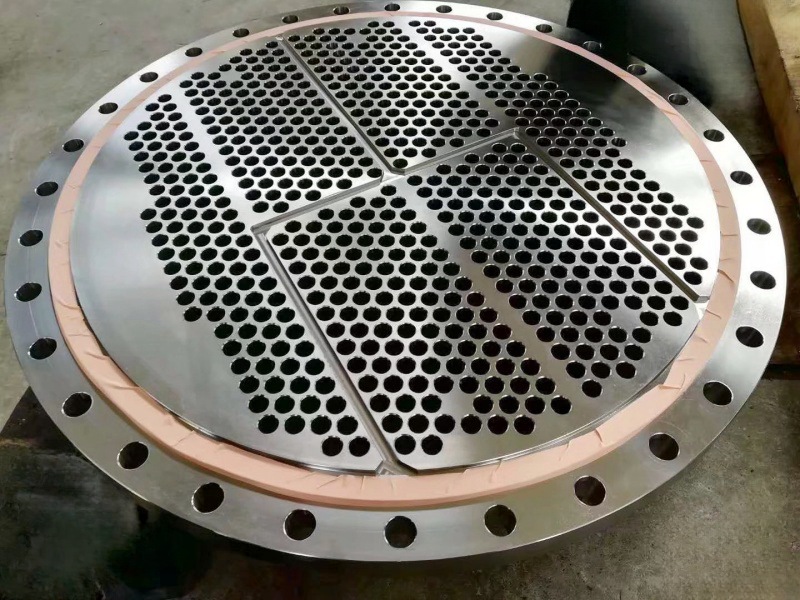
What Are You Looking For?
Outer diameter: 2010mm
Thickness: 25mm
Lagest Forging: 100MT.
Max OD of tube sheets: 8 Meters.
Tube hole details: positioning accuracy of up to 0.01mm, minimum aperture tolerance of 0.01mm, minimum roughness Ra0.6 in the hole.
Material: C70600
Standards: ASTM, AISI, ASME, DIN, EN, AS, GB.
In industrial applications, corrosion resistance and structural integrity are very important, and welded overlay tube sheets have become essential components. Overlay welding also known as cladding, is a process of coating a corrosion-resistant alloy on the surface of a based materials. This technology provides an effective solution to protect the tube sheet from the impact of corrosive environments and extends its service life. And it can greatly reduce costs.

Overlay welding is a surface treatment process that uses heating sources such as arcs to heat metal or alloy materials, and then heats and melts them on the surface of the base materials to fill the other material and form a layer of metal coating. By depositing materials with certain properties on the surface of the workpiece, the surface characteristics of the workpiece can be changed. The purpose of overlay welding is not to connect the workpiece, but to use welding methods to deposit one or several layers of materials with the desired performance on the workpiece. This process method is widely used in various industrial sectors, mainly for repairing worn and cracked parts, or modifying the surface of workpieces to obtain special properties such as wear resistance, heat resistance, and corrosion resistance of the deposited layer.

When selecting weld overlay tube sheets, several factors should be considered:
1.Corrosion Environment: Assess the nature of the operating environment, including the temperature, pressure, and the types of fluids or gases being processed. This information helps determine the appropriate corrosion-resistant alloy for the cladding layer.
2. Base Material Compatibility: Consider the compatibility between the base material and the cladding layer to ensure optimal bonding and long-term performance.
3. Cladding Thickness: Determine the appropriate thickness of the cladding layer based on the severity of the corrosion environment and the desired service life of the equipment.
4. Manufacturing Standards: Verify that the weld overlay tube sheets comply with relevant industry standards and quality assurance processes to ensure their reliability and performance.
Materials:
Stainless Steel & Duplex Steel: ASTM A240 Gr.304, 304L, 304H, 316, 316L, 316Ti, 321, 321H, 310S, 310H, 310MoLN, 317L, 347, 347H, 904L, AL-6XN (N08367), Duplex 2205 (S31803 & S32205), Duplex 2507 (S32750), 410, 444, 253MA, 254SMO (S31254)
ASTM A182 F304, F304L, F304H, F316, F316L, F316Ti, F321, F321H, F310, F310H, F317L, F347, F347H, F20 (N08020), F44 (S31254), F51 (S31803), F53 (S32750), F60 (S32205), F62 (N08367), F904L
Nickel & Nickel Alloy: Nickel 200, Nickel 201, Monel 400, Incoloy 800/800H/800HT/825/901/926, A-286, Inconel 600/601/625/718/X-750, Hastelloy B/B-2/C-4/C-22/C-276, Invar 36
Titanium & Titanium Alloy: ASTM B265 Gr.1, Gr.2, Gr.7, Gr.12
ASTM B381 F1, F2, F7, F12
Copper & Copper-Nickel: C46400, C61400, C70600 (10% Ni, 90% Cu), C71500 (30% Ni, 70% Cu)
Clad Materials: Explosive Cladding(SS/CS, Ni/CS, Cu/CS, Ti/CS, Ti/SS, Cu/SS, Ni/SS, Ti/Cu, Ti/Ni) & Overlay Welding